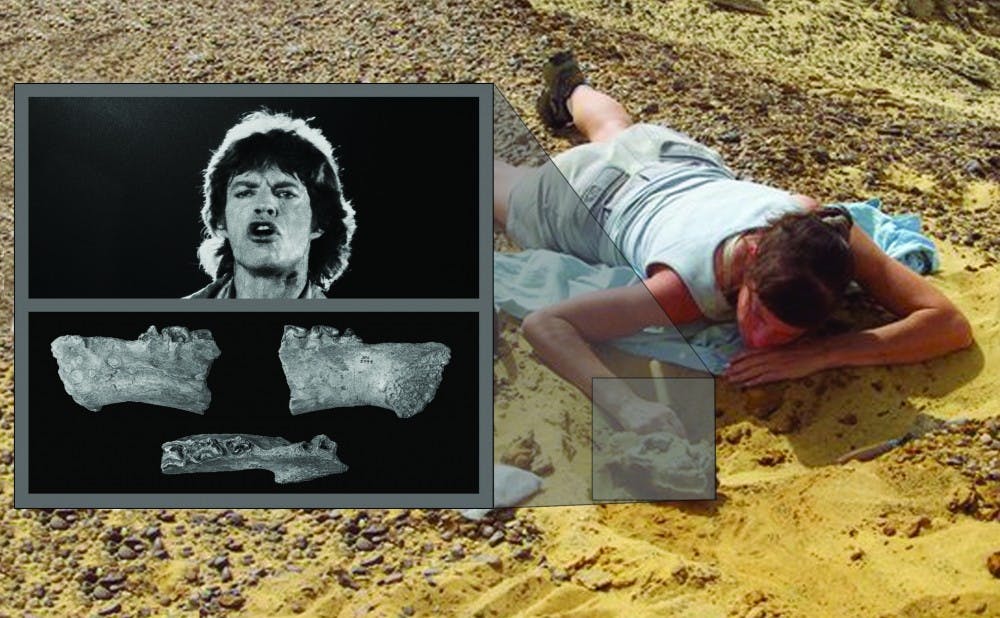An ancient animal discovered by a Duke researcher has got lips like Jagger.
A team led by Gregg Gunnell, director of the Division of Fossil Primates at the Duke Lemur Center, and Ellen Miller, associate professor of physical anthropology at Wake Forest University, recently unearthed the fossils of an extinct African creature with highly distinguishable lips. Part of a family of hoofed animals called anathracores, the animal earned the name Jaggermeryxnaida after Rolling Stones frontman Sir Mick Jagger—long noted for his own distinct lips.
"We called it Jaggermeryx kind of as a joke at first," Gunnell said. "The closer we got to publication time, we thought, why not?"
The discovery of Jaggermeryxnaida—literally, "Jagger's water nymph"—will be published in September's Journal of Paleontology. Both Rolling Stones fans, Gunnell and Miller said that the animal's naming process was enjoyable.
“A rock named after a rock star, famous for his sensitive lips,” Miller joked.
Gunnell noted that actress Angelina Jolie originally came to mind as a possible namesake, but he and Miller agreed that she probably would not be too fond of the name, given that Jaggermeryx is not the most attractive animal.
“This animal had a very sensitive, mobile mouth with largish lips, sort of like a moose,” Gunnell said.
Aside from its distinct lips, Jaggermeryx looks similar to other anthracotheres. Reconstructed as a robust, hippo-like creature, it features long legs and a pouty face. Unlike many other anthracotheres, however, the ancestors of Jaggermeryx did not migrate from Asia, but instead originated from Africa.
“Typical animals of Africa you think of today—lions, giraffes, zebras, elons and gazelles—all of those animals came from Asia, or at least their ancestors did," Gunnell said.
But further study of the creature could be complicated by issues in Jaggermeryx's native Egypt, the researchers said.
“There are security concerns," Miller said. "We will be back with our joint Egypt- American team as soon as possible.”
Aside from the political turbulence in Egypt, the land where the fossils were discovered is now being transformed into an agricultural area. Gunnell said the locality is currently being flooded and planted with crops, precipitating the unfortunate possibility of losing the fossils during the next few years.
The Lemur Center currently holds the only Jaggermeryx fossils in North America, with approximately fifteen specimens housed in a collection room. Gunnell said he believed these fossils will suffice for current research purposes, noting that there is also the possibility of uncovering similar Jaggermeryx fossils elsewhere in North Africa, including in places like Libya.
Although the creature's name is unique, it is not the first time that Duke researchers have named a discovery after a popular musician. In 2012, biology professor Kathleen Pryor similarly received attention for her decision to name a genus of ferns after singer Lady Gaga.
Get The Chronicle straight to your inbox
Signup for our weekly newsletter. Cancel at any time.

